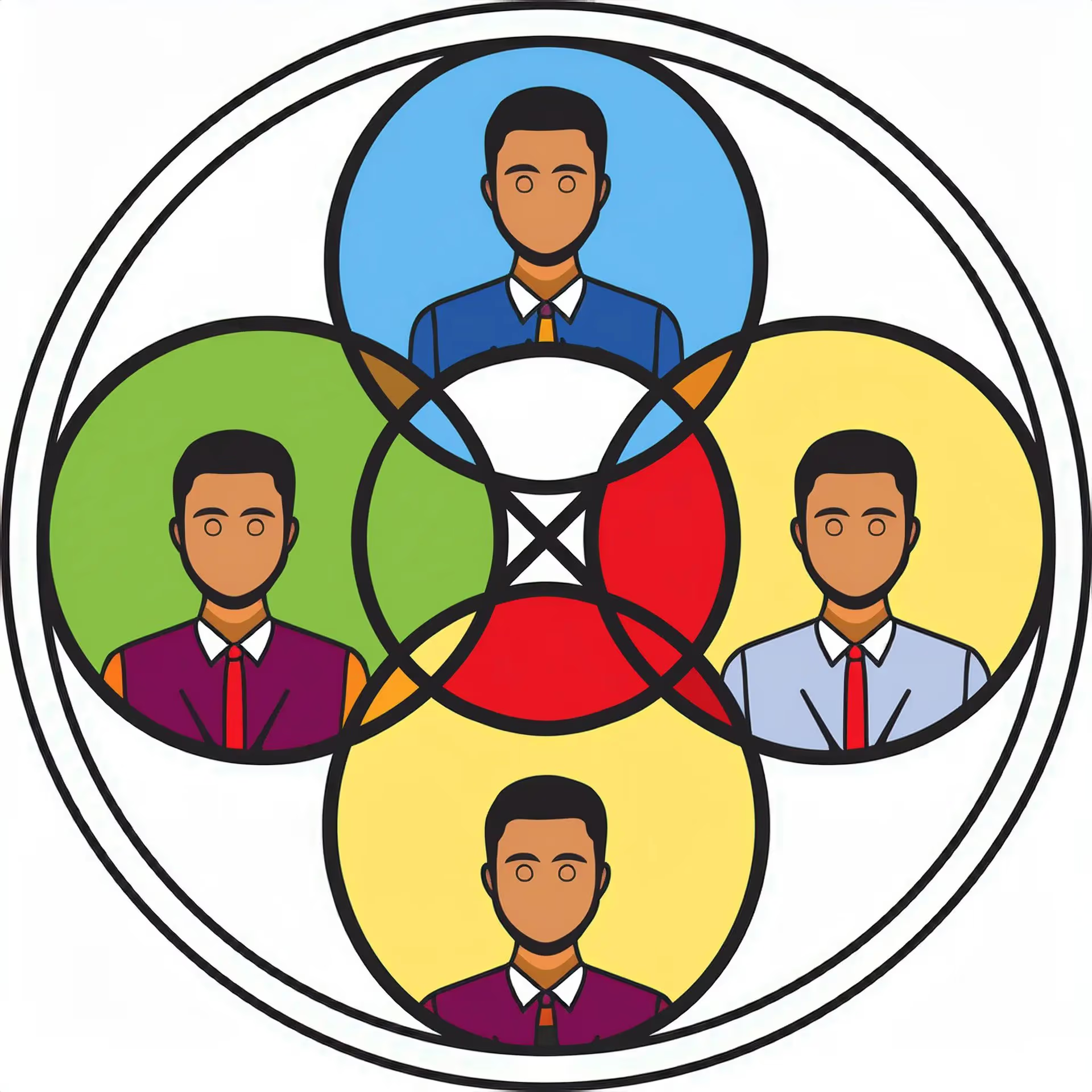In today’s competitive marketplace, understanding your customers is more critical than ever. Customer segmentation—the process of dividing a broad consumer or business market into sub-groups based on shared characteristics—enables businesses to tailor their marketing efforts effectively.
By identifying distinct customer segments, organizations can create personalized marketing strategies that resonate with specific demographic groups, ultimately leading to higher engagement, increased loyalty, and improved sales performance.
Market research plays a pivotal role in developing effective customer segmentation strategies. Through comprehensive data collection and analysis, businesses can uncover valuable insights into customer behaviors, preferences, and needs. This foundational knowledge allows companies to segment their audience accurately and design targeted campaigns that speak directly to each group’s unique motivations.
Agile methodologies further enhance the segmentation process by facilitating quick adjustments based on emerging data trends and real-time analytics. With an agile approach, businesses can rapidly iterate on their segmentation strategies, responding promptly to shifts in consumer behavior or market conditions.
This adaptability ensures that marketing efforts remain relevant and effective, allowing organizations to stay ahead of the competition and meet the evolving demands of their target audience. In this blog, we will explore how market research and agile methodologies work together to create robust customer segmentation strategies that drive business success.

Understanding Customer Segmentation
Customer segmentation is the process of dividing a company's customer base into smaller, more manageable groups based on shared characteristics. This strategic approach allows businesses to tailor their marketing efforts to specific demographic groups, enhancing the relevance and effectiveness of their messaging.
By understanding the unique needs and preferences of each segment, organizations can create targeted campaigns that resonate with customers, ultimately leading to increased engagement, loyalty, and sales. Effective customer segmentation not only helps in identifying high-value customers but also enables businesses to anticipate market trends and deliver superior customer experiences.
Types of Customer Segmentation
Demographic Segmentation
Demographic segmentation categorizes customers based on quantifiable characteristics such as age, gender, income, education level, and marital status. This is one of the most common forms of segmentation as it provides straightforward data that can be easily collected and analyzed. For example, a luxury brand may target affluent women aged 30-50, tailoring its products and marketing messages accordingly.
Psychographic Segmentation
Psychographic segmentation delves deeper into the psychological aspects of consumer behavior, grouping customers based on their values, interests, lifestyles, and personality traits. This type of segmentation helps businesses understand what motivates their customers beyond basic demographics. For instance, a fitness brand might target health-conscious individuals who prioritize wellness and sustainability.
Behavioral Segmentation
Behavioral segmentation focuses on customers' purchasing habits, brand loyalty, usage frequency, and interactions with products or services. By analyzing past behaviors, businesses can identify patterns that inform marketing strategies. For example, an online retailer may offer personalized promotions to frequent shoppers while targeting occasional buyers with incentives to increase their purchase frequency.
Geographic Segmentation
Geographic segmentation divides customers based on their location—such as country, region, city, or even climate. This approach recognizes that consumer needs and preferences can vary significantly across different geographic areas. For example, a clothing retailer might market winter apparel in colder regions while promoting lighter fabrics in warmer climates.
Needs-Based Segmentation
Needs-based segmentation targets customers based on specific pain points or requirements that drive their purchasing decisions. This method allows businesses to tailor solutions that directly address customer needs. For instance, a software company may segment its audience based on whether they require basic functionality or advanced features for larger enterprises.

Agile Methodologies for Effective Segmentation
Agile methodologies revolutionize the way businesses approach customer segmentation, enabling them to adapt quickly to emerging data trends and evolving customer preferences. By embracing an agile framework, organizations can enhance the effectiveness of their segmentation strategies through rapid iteration, real-time analytics, and cross-functional collaboration.
Rapid Iteration and Feedback Loops
Agile methodologies prioritize iterative development and continuous feedback, allowing businesses to quickly adjust their segmentation strategies based on new insights. Instead of relying on lengthy, rigid processes, agile teams break down segmentation efforts into manageable sprints, typically lasting from one to four weeks. At the end of each sprint, teams review the results, gather feedback from stakeholders, and make necessary adjustments to their segmentation approach.
This iterative process enables organizations to respond swiftly to emerging data trends, ensuring that their segmentation strategies remain relevant and effective.
For example, if a company notices a sudden increase in mobile usage among a particular customer segment, they can quickly adapt their marketing tactics to optimize for mobile devices, delivering a seamless user experience that resonates with this evolving group.
Real-Time Analytics
Agile methodologies leverage advanced analytics tools to provide immediate insights into customer behavior, empowering businesses to make data-driven decisions. By continuously monitoring customer interactions, purchase patterns, and engagement metrics, organizations can identify emerging trends and refine their segmentation strategies accordingly.
Real-time analytics dashboards offer a comprehensive view of customer data, enabling teams to identify key performance indicators (KPIs) and track the effectiveness of their segmentation efforts. This visibility allows for quick course corrections, ensuring that marketing campaigns and product offerings remain aligned with the needs and preferences of each customer segment.
Collaboration Across Teams
Agile methodologies emphasize cross-functional collaboration, bringing together teams from various departments to collectively refine segmentation strategies. Regular stand-up meetings and collaborative tools facilitate open communication and shared understanding among stakeholders, ensuring that everyone is aligned on objectives and progress.
By fostering a collaborative environment, businesses can leverage diverse perspectives and expertise to enhance their segmentation strategies. For instance, marketing teams can provide insights into customer preferences and campaign performance, while product development teams can offer valuable feedback on how segmentation impacts product roadmaps and feature prioritization.
With BioBrain's advanced analytics capabilities, businesses can analyze customer data in real time. The platform provides immediate insights into customer behaviors, preferences, and purchasing patterns, enabling organizations to refine their target segments more accurately. By continuously monitoring customer interactions and engagement metrics, BioBrain allows businesses to adapt their marketing strategies swiftly based on the latest data trends.
BioBrain supports dynamic audience segmentation, which continuously categorizes individuals into different segments based on real-time data and behavior. Unlike static segmentation methods, BioBrain's approach allows for adjustments to segment assignments as new information becomes available. This flexibility ensures that businesses can respond proactively to changes in customer behavior or market conditions.
BioBrain's unique position as a platform that connects users with the world’s top suppliers ensures access to high-quality samples for research studies. This capability enhances the reliability of customer segmentation by providing diverse and representative data points from various demographics.
By leveraging these high-quality data sources, businesses can develop richer, more accurate customer profiles that inform their marketing strategies.
BioBrain's Agile MROps platform empowers organizations to conduct effective customer segmentation through rapid data collection, real-time analytics, dynamic segmentation capabilities, enhanced collaboration across teams, and access to high-quality data sources.
By leveraging these features, businesses can create tailored marketing strategies that resonate with specific consumer needs, ultimately driving engagement and growth in an increasingly competitive landscape.











